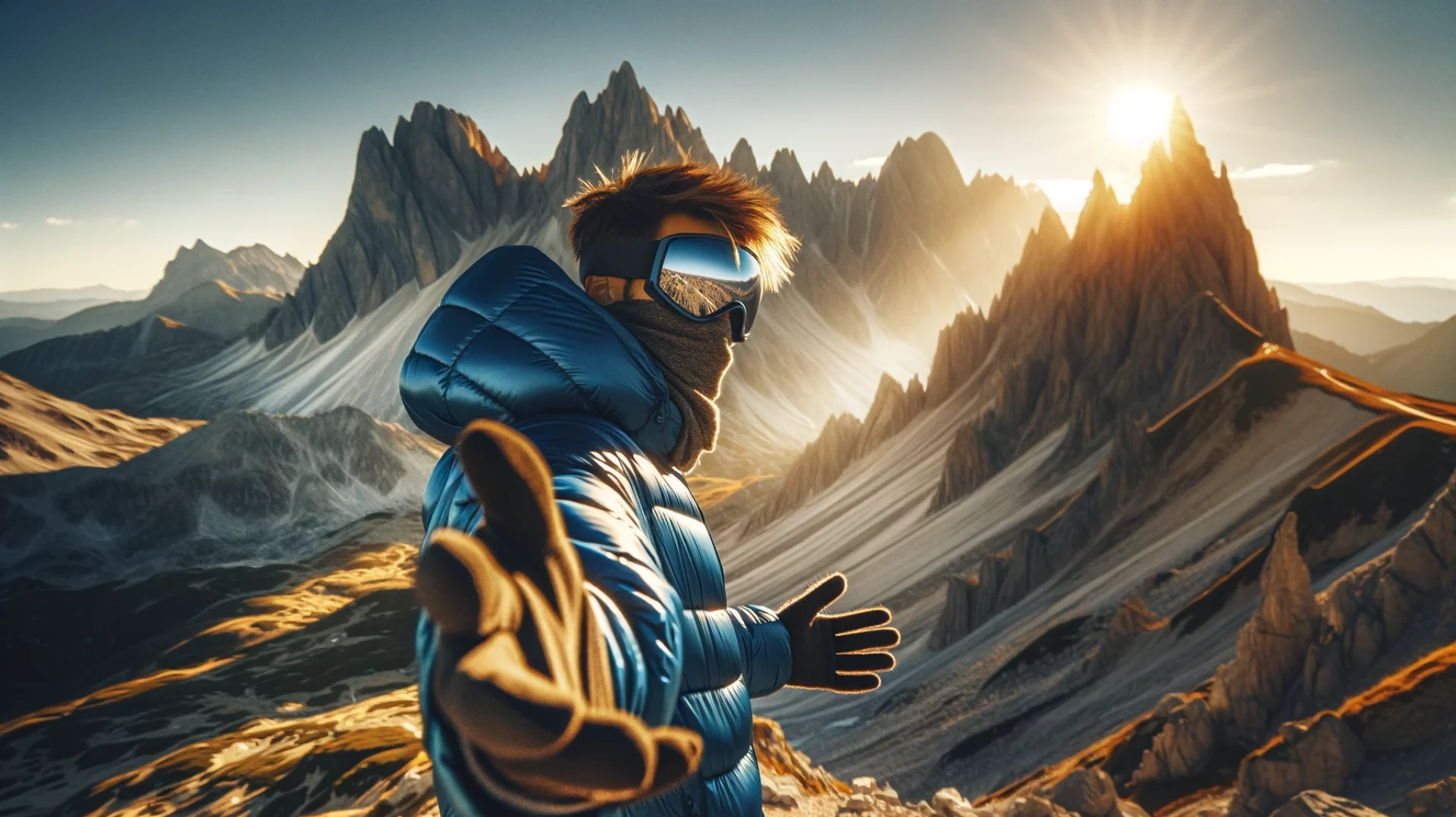Introduction
In the heart of Norway lies a land that seems sculpted by the hands of mythic giants—Jotunheimen. Translated as the “Home of the Giants,” Jotunheimen is a vast mountain range that boasts Norway’s highest peaks, deep valleys, shimmering glaciers, and a plethora of alpine lakes. This region, steeped in Norse mythology and natural grandeur, offers adventurers and nature enthusiasts a chance to immerse themselves in a landscape that is as challenging as it is breathtaking.
Geography and Topography
Summit of Galdhøpiggen, Norway’s highest peak.
Location
Jotunheimen spans approximately 3,500 square kilometers in Southern Norway, primarily within the counties of Innlandet and Vestland. The region is part of the larger Scandinavian Mountains and is easily accessible from major cities like Oslo and Bergen.
Peaks and Glaciers
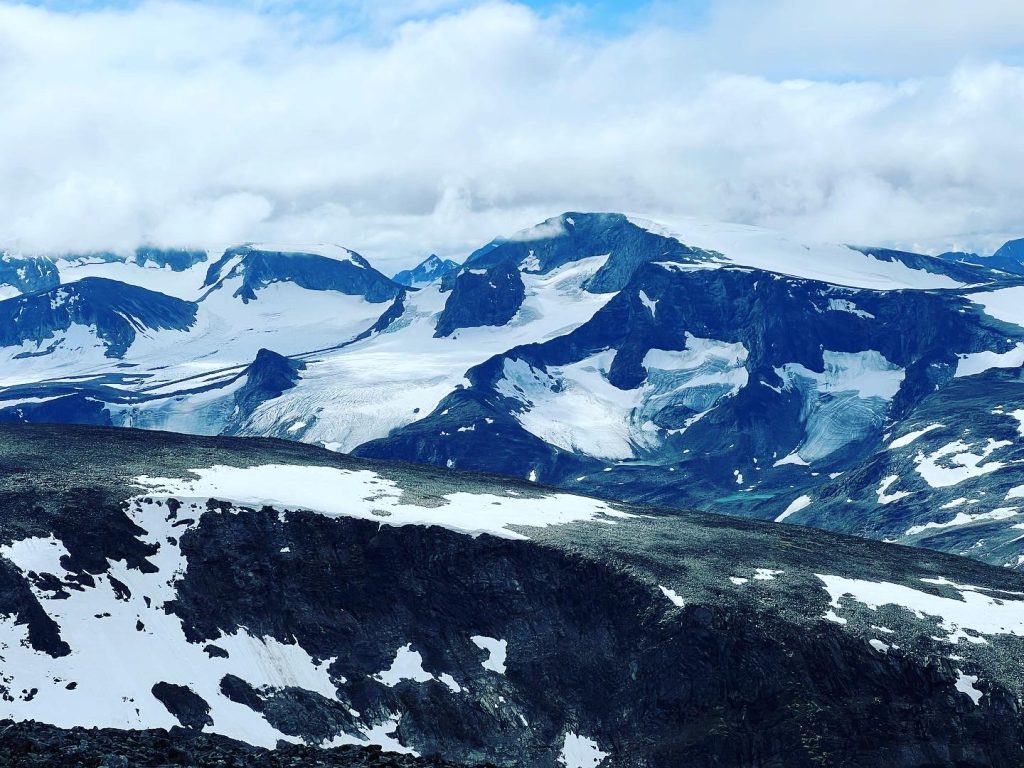
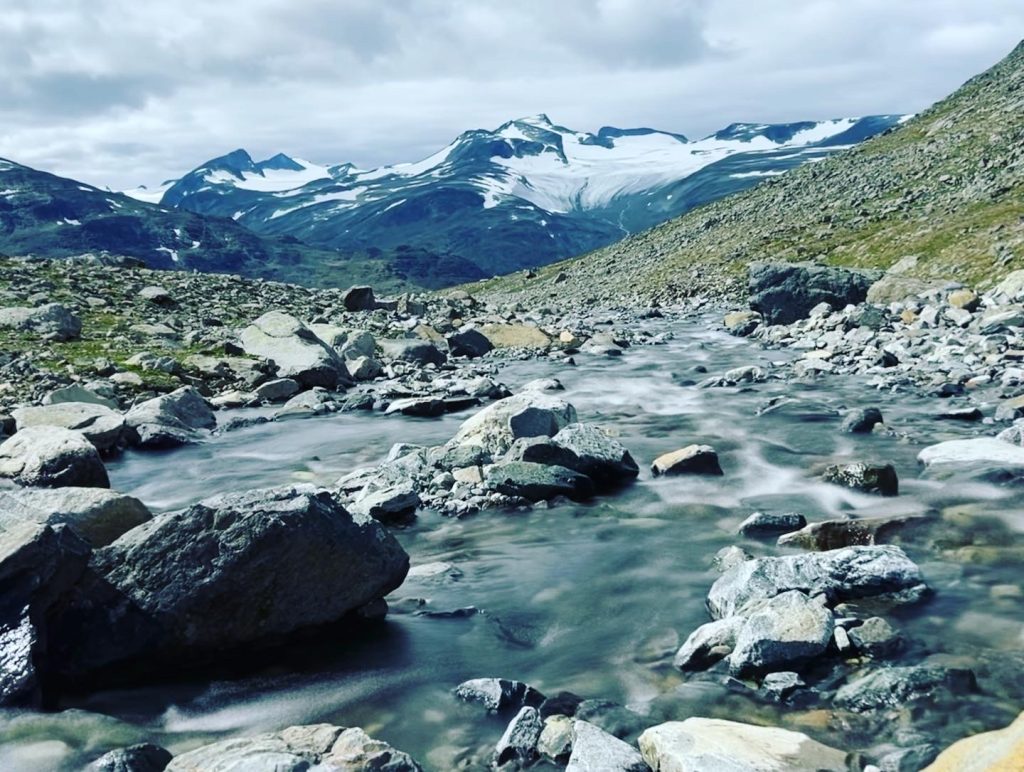
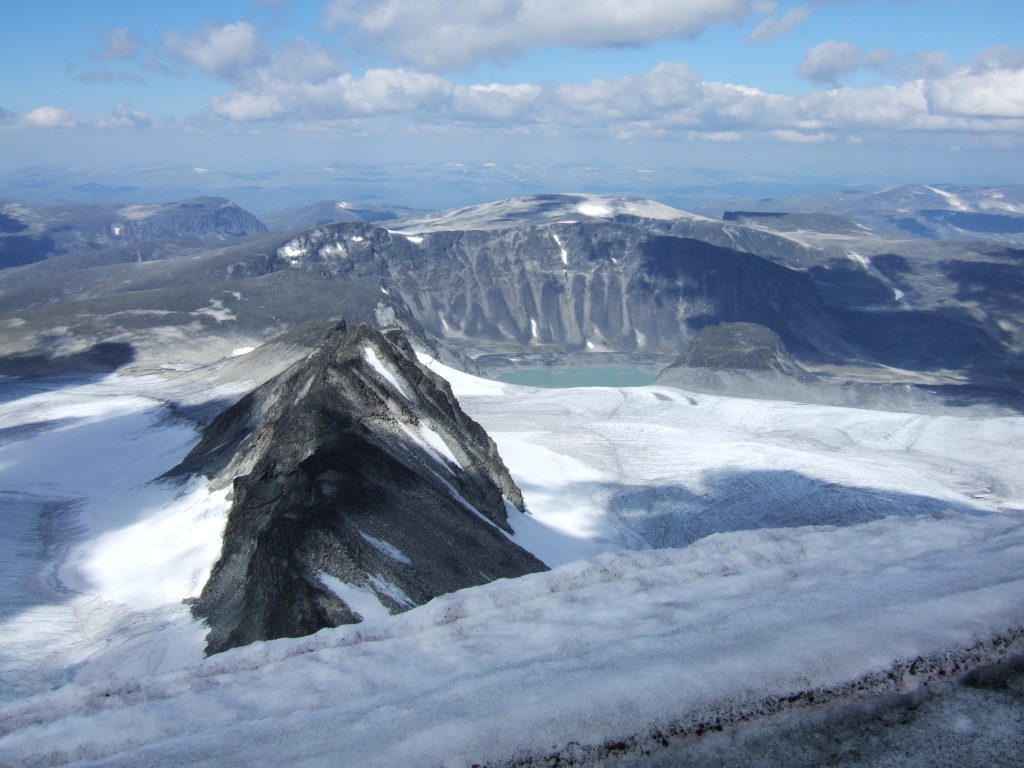
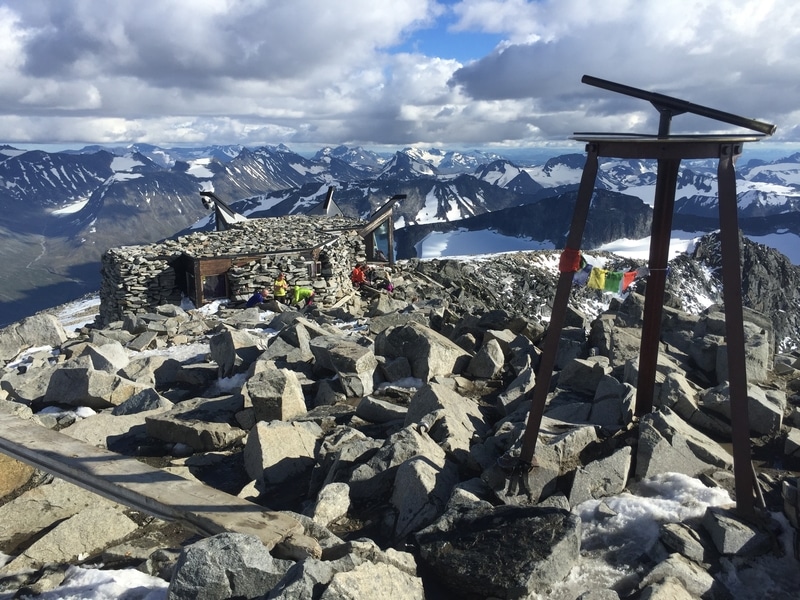
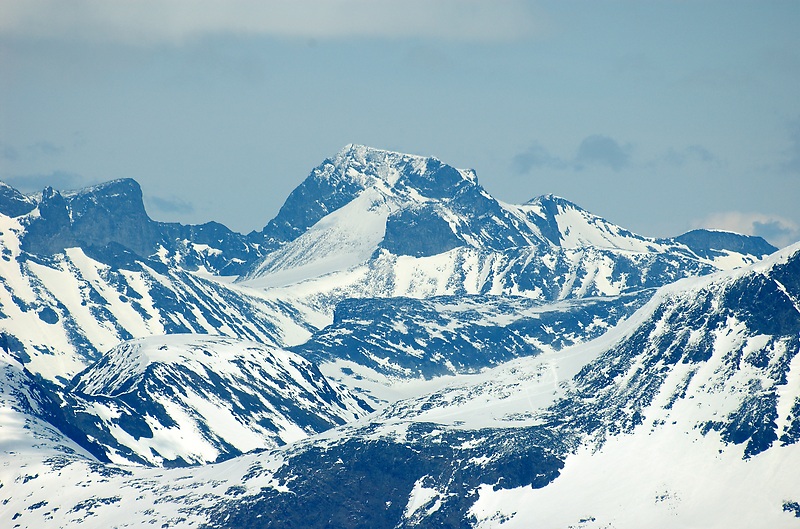


- Galdhøpiggen: Standing at 2,469 meters (8,100 feet), it’s the tallest mountain in Northern Europe.
- Glittertind: Once considered the highest due to its glacier cap, it measures 2,465 meters (8,087 feet).
- Other Notable Peaks: Store Skagastølstind (2,405 m), Store Styggedalstind (2,387 m), and Store Memurutinden (2,367 m).
The region is also home to numerous glaciers, such as the Svellnosbreen and Smørstabbreen, which contribute to its rugged and icy landscape.
Lakes and Rivers
Jotunheimen’s topography includes pristine lakes like Gjende and Bygdin, and rivers that carve through valleys, offering both aesthetic beauty and opportunities for freshwater activities.
Flora and Fauna
An Arctic fox amidst the alpine tundra.
Vegetation
- Alpine Meadows: Dominated by hardy grasses and wildflowers like moss campion and alpine bistort.
- Birch Forests: At lower elevations, downy birch forests provide a lush green contrast to the rocky peaks.
- Lichen and Moss: These are prevalent, especially in higher altitudes where conditions are too harsh for other plant life.
Wildlife
- Mammals: Reindeer, Arctic foxes, wolverines, and mountain hares.
- Birds: Golden eagles, ptarmigans, and various species of owls and grouse.
- Aquatic Life: Lakes and rivers are teeming with trout and Arctic char.
The diverse ecosystems support a range of species adapted to the alpine environment, many of which are of significant conservation interest.
Cultural Significance and History
Ancient rune stones found near Jotunheimen.
Norse Mythology
The name “Jotunheimen” originates from Norse mythology, referring to the homeland of the jotnar (giants), who were often adversaries of the gods. This mythological connection adds a layer of mystique to the already awe-inspiring landscape.
Exploration and Settlement
While the harsh environment limited permanent settlements, the area has a rich history of exploration:
- Early Explorers: The 19th century saw adventurers like Aasmund Olavsson Vinje, who built a cabin in the region and promoted its natural beauty.
- Tourism Development: The establishment of the Norwegian Mountain Touring Association (DNT) in 1868 led to the creation of trails and huts, facilitating safer exploration.
Art and Literature
Jotunheimen has inspired numerous artists, writers, and musicians. Its dramatic landscapes are featured in paintings, poems, and sagas, cementing its place in Norwegian cultural heritage.
Outdoor Activities
Hikers traversing the Besseggen Ridge.
Hiking and Trekking
- Besseggen Ridge: One of Norway’s most famous hikes, offering panoramic views of Gjende and Bessvatnet lakes.
- Galdhøpiggen Ascent: A challenging climb to the highest peak, often requiring glacier crossing.
Mountaineering and Climbing
The region’s peaks offer routes for both novice and experienced climbers, with some requiring technical skills and equipment.
Skiing and Snowboarding
During winter, Jotunheimen transforms into a snowy paradise:
- Cross-Country Skiing: Extensive trails cater to various skill levels.
- Backcountry Skiing: For the adventurous, the untouched powder and challenging terrains are unparalleled.
Fishing and Boating
The lakes and rivers are ideal for fishing, canoeing, and kayaking during the warmer months.
Conservation Efforts
Entrance to Jotunheimen National Park.
Jotunheimen National Park
Established in 1980, the park covers approximately 1,151 square kilometers, aiming to preserve the area’s unique ecosystems and landscapes.
Sustainable Tourism
- Trail Maintenance: Efforts to minimize erosion and habitat disruption.
- Waste Management: Strict guidelines for waste disposal and camping to maintain the pristine environment.
Research and Monitoring
Ongoing studies monitor the impacts of climate change, human activity, and other factors on the region’s biodiversity.
Travel Tips
Detailed map highlighting trails and huts.
Best Time to Visit
- Summer (June to August): Ideal for hiking, with milder temperatures and extended daylight.
- Winter (December to March): Perfect for winter sports, though conditions can be harsh.
Accommodation
- Mountain Huts: Operated by DNT, offering varying levels of amenities.
- Camping: Permitted in many areas, but always follow Leave No Trace principles.
Safety Precautions
- Weather Awareness: Mountain weather can be unpredictable; always check forecasts.
- Guided Tours: Recommended for glacier crossings and challenging hikes.
- Equipment: Ensure you have appropriate gear for the chosen activities and seasons.
Accessibility
- Transportation: Buses connect major cities to trailheads; car rentals offer flexibility.
- Permits: Some activities may require permits; check with local authorities.
Conclusion
Jotunheimen is more than just a mountain range; it’s a testament to nature’s grandeur and resilience. Whether you’re scaling its towering peaks, wandering through its verdant valleys, or simply absorbing the silence of its alpine meadows, the “Home of the Giants” offers experiences that resonate deeply with the soul. As we explore and cherish this majestic landscape, it’s imperative to respect and preserve its pristine beauty for future generations.
